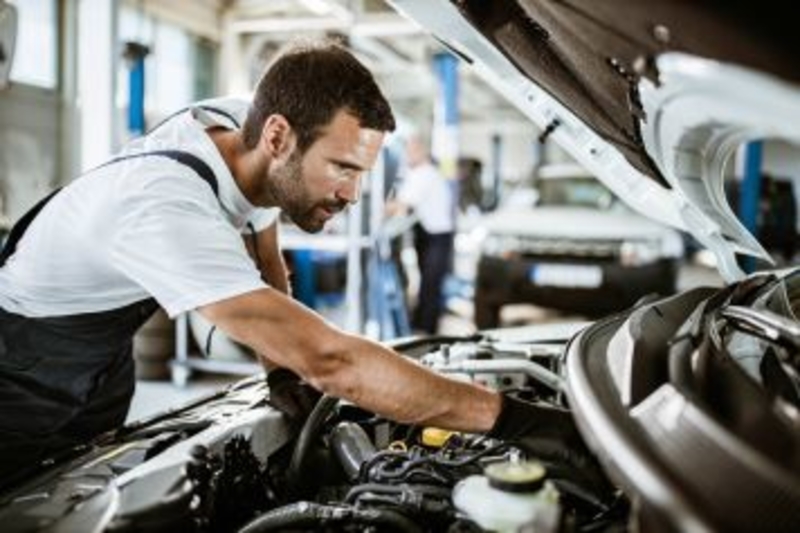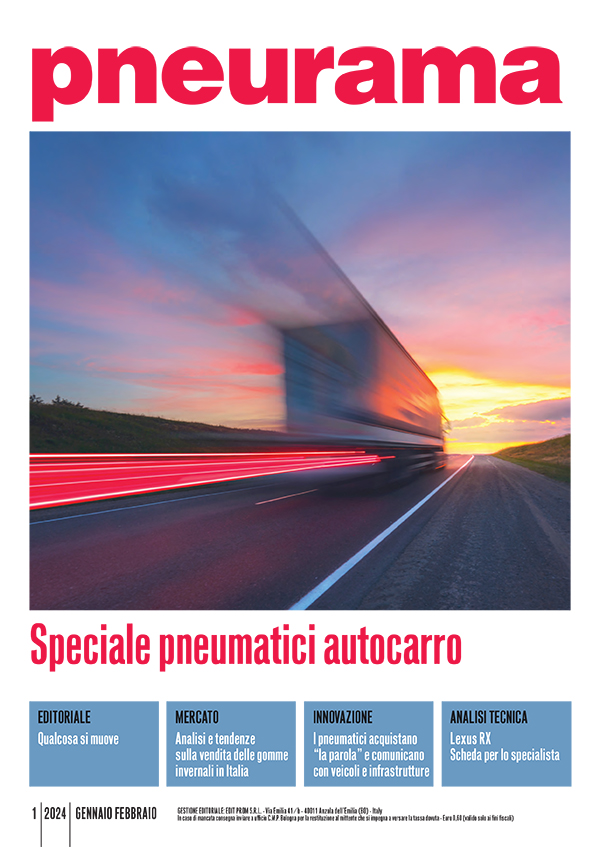Technology working for garages and motorists
Tires are the only vehicle components that actually touch the road. In an era where connectivity is becoming a staple in automotive, Connected Tires will quickly become your tire dealer’s new allies

Workplace accidents are decreasing, but in a number of workshops, work is still being done without complying with current occupational safety regulations. This is a key issue for many trade associations, which have always been at the forefront in promoting professional training courses and keeping a high level of attention to compliance with the rules. In Italy, according to the latest data from Inail, in 2018, 5,560 workplace accidents were reported which involved body shops, electricians, tire repairer and mechanic. The traumas suffered in 60% of the cases were contusions, fractures, dislocations and wounds, generally on hands, legs and face. Not only that. Inail, in its report, also recorded 559 cases of occupational diseases of which 67.8% were related to problems linked to the Osteomuscular system (spinal disc herniation, shoulder injuries, tendinitis). For the Institute, the cause of these accidents and illnesses is to be found in the failure to comply with elementary occupational safety regulations. The traumas reported as well as occupational diseases indicate a lack of attention on the part of the employers in the use of safety devices in the workshop. Compared to a few years ago, however, Inail has started to see some slight improvements. In fact, if you compare the 2018 claims with 2016, there is a 9.03% drop in claims (552 cases less). A reduction that bodes well. However, the reason for this reduction can be attributed to two opposing factors. The first is linked, according to many trade associations, to a greater awareness on the part of car repairers in taking appropriate measures to prevent accidents. In addition, the use of equipment designed - as required by the Machinery Directive 2006/42 EC - to reduce the risk of accidents has enabled operators to work with more efficiency and with safer tools. The second factor, on the other hand, relates to a drop in the number of workshops, as many in recent years were forced out of business. Hence, the sector, while still enjoying a reasonably good health, with a turnover in vehicle maintenance estimated at around 32.1 billion euro - a figure which, once the impact of the Covid-19 pandemic on the economy has been analysed, will have to be revised downwards - has seen the number of workshops in the area fall by 1.3%. According to data from the Autopromotec Observatory, 1,038 car repairers closed down, going from 79,655 in 2016 to 78,617 in 2018. A reduction that has certainly played a role in the reduction of claims lodged with Inail. On the whole, however, the picture taken by the Institute, although showing a reduction, is still incomplete. The reason is to be found in the presence on the territory of irregular companies. Illegal body shops, electricians, tire dealers and mechanics. Here is where unreported employment is rife. Workers who are unknown to Inps, Inail, tax and social security and who therefore do not appear in any statistics. We are talking about people who, in the event of an accident, will not rush to file a complaint and are therefore to be considered "ghosts" for the State. A scourge for the country’s socio-economic fabric that damages fair competition between car repairers and deprives workers of their rights.
RISKS ASSOCIATED WITH THE HANDLING HEAVY LOADS
Matteo Cecconi, plant and equipment safety manager at Alfa Hse Consulting.
Among the various risks to be assessed by the employer, there is one related to the manual handling of heavy loads - e.g. lifting wheels or heavy vehicle components - which can lead to biomechanical overload pathologies, in particular for the back and lower spine. The employer should seek to eliminate the risks associated with such activities, as well as all other risks, and where this is not possible, at least to reduce them to a minimum based on current knowledge and technological progress. The risk must be assessed using technical standards (those of the ISO 11228 series); ISO 11228-1 makes it possible to establish the recommended weight limit for each handling operation. To determine it, a reference value for adult male workers is 25 kg.
This reference weight must be multiplied by factors that depend on how the operation is performed, e.g. distance of the hands from the body, vertical displacement of the object, number of movements in a day and other indications. The resulting weight is the recommended weight limit and the value should be compared with the actual weight of the object handled. If the weight of the object is higher than the recommended weight limit, i.e. if the risk index is higher than 1, it means that the situation may involve a risk which is higher as the index is higher. The employer must therefore take steps to eliminate or reduce the risk, first of all with technological measures (for example the adoption of lifts, jacks and so on) as well as with organisational measures (shifts), and implement a health and safety training program and a monitoring systems.
A "VIRTUAL WORKSHOP" TO REDUCE WORKPLACE INJURIES
Safety at work can be learned through virtual reality. This is the case of "Officina Virtuale" (virtual workshop), an application designed by Inail's Technological Innovation Consultancy and Digital Organization Management that recreates a real workshop through simulations, structures and 3D models. The objective of this application is to easily convey the knowledge of correct accident prevention practices through the use of technology. Addressed specifically to business owners and their employees, but also to health and safety trainers, this solution allows to visualize, in a virtual environment, situations and potential sources of risk, and to simulate the best and safest behaviour to be kept, thus avoiding errors, and consequently, lowering the rate of accidents at work. Through a pair of "smart glasses", the employee finds himself inside a workshop performing a repair job. During the various phases of the operation, the specialist receives information as to the correct way to carry out the job and the precautions to be taken, along with an overview of the safety regulations applicable to the environment in which he or she works.
Tires are the only vehicle components that actually touch the road. In an era where connectivity is becoming a staple in automotive, Connected Tires will quickly become your tire dealer’s new allies
Often mistakenly confused with toe-in (which is only a part of it), correct wheel alignment is crucial as vehicle stability and even proper tire wear depend on it
We are well aware that during the various lockdowns caused by the pandemic, online shopping soared to new records. The tragic Covid-19-driven contingency, however, has only emphasized a trend that was already evident, and that is to consider the Internet as an important purchasing channel
